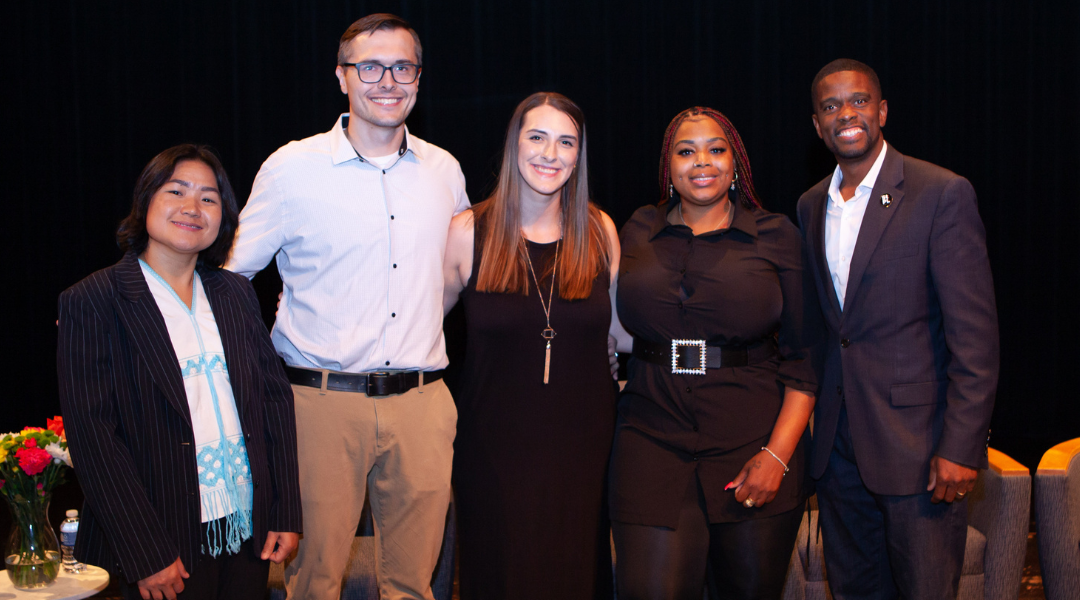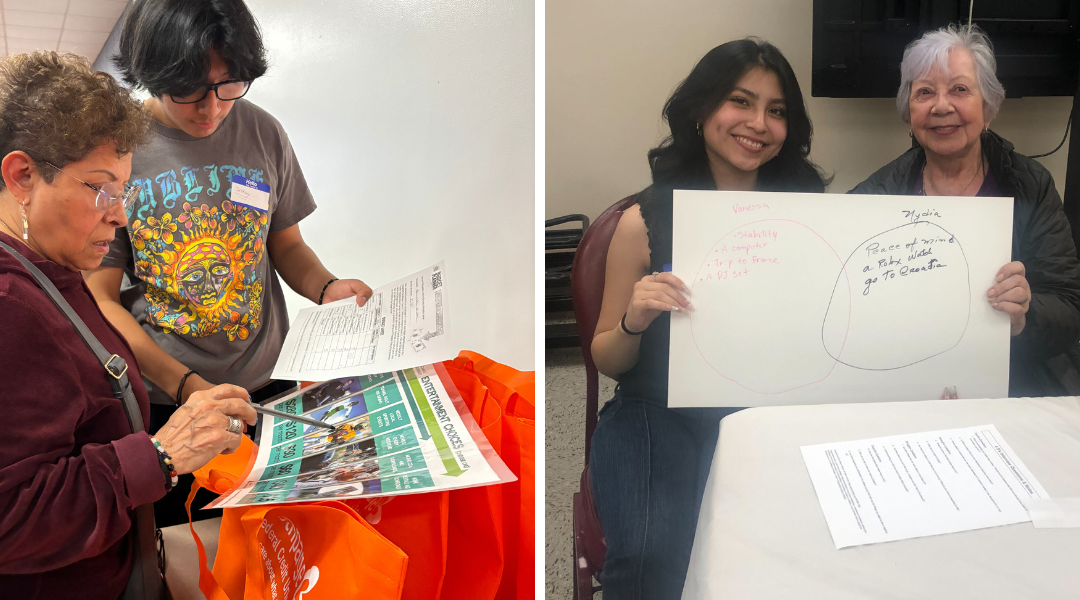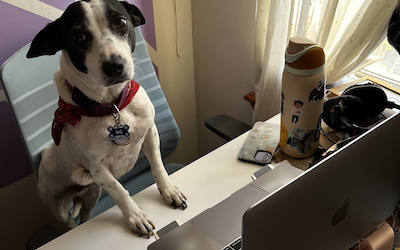
L-R: Jade Oji, George Nunes, and Chris Elliott work together on a social media campaign to bring awareness of job opportunities and national service positions
Jill Watts is the Director of Capacity Building Initiatives at the ASU Lodestar Center for Philanthropy and Nonprofit Innovation. ASU’s Cogenerational Service Academy is one of 10 awardees of the CoGen Challenge to Advance Economic Opportunity. Watch for interviews with all 10 of these innovators bringing older and younger people together to open doors to economic opportunity for all.
What is the Cogenerational Service Academy and what brought you to this work?
At the Cogenerational Service Academy at ASU, we work to bridge the generational divide within national service and normalize collaborative problem-solving.
Older volunteers and younger AmeriCorps members work in small teams to develop service projects that help close the racial wealth gap, support minority- and female-owned small businesses, improve financial literacy and promote community economic resilience.
What problem are you trying to solve?
Our cogenerational initiative focuses on solving economic challenges by fostering meaningful connections and mutual learning opportunities between the older adults and younger AmeriCorps members. We’re promoting social inclusion, reducing ageism, and enhancing community cohesion.
Arizona is a unique state in that residents matriculate here from across the country for a number of reasons; an active collegiate and retirement life are high on the list. We want to tap into the desire for active community life by bringing together older and younger people who share a vision for community that encourages economic opportunity for all.
How do youngers and olders solve the problem together?
The youngers are mostly people of color who are committed to social justice and equity. The olders vary in demographics and passions, but all have experience working in the nonprofit sector.
The cogenerational sessions begin with a shared agreement on how to communicate, check in as team members, and be transparent when it comes to needing support. The process of gaining understanding and moving forward with a shared vision has been important.
For example, it’s common amongst the younger participants to communicate by texting, and due to busy schedules with work, school, and service, they may take longer to respond. Many of our older participants prefer the simplicity of picking up the phone to discuss in real-time. The agreements take into consideration everyone’s preferences and what is realistic and practical.
What unique perspectives or strengths do younger and older individuals bring to the table, and how are they complementary?
The youngers bring vulnerability and a willingness to throw their whole selves into the work. They aren’t concerned about separating their work and personal lives. The olders bring project management experience and connections with local organizations. They also have diverse professional backgrounds, such as education, military, and entrepreneurship. Their experiences in these sectors help guide project creation and implementation.
Can you share an example or two?
The youngers in one of our groups have big aspirations for their project. They’re setting up a one-day market for local businesses and helping them get their licenses. They’re planning to offer lots of services, and it’s going to be a big, successful event. That wouldn’t be possible without their vision and energy. Meanwhile, the older folks’ connections were key in getting the resources needed for the event.
Younger people on another team were deliberating which nonprofit to support for their service project. True to a service spirit, they wanted to choose them all. The older participant helped walk them through a process to weigh the pros and cons of each organization, to narrow down the options to the best fit for their needs and goals.
Have you faced any difficulties or misunderstandings in working across generations, and how did you deal with them?
The youngers have busy schedules and have been less available. They are also less responsive to group communication. When this happens, we revisit the community agreements, and remind participants of the elements of the accountability training they received prior to the implementation stage of the projects, which emphasizes the need for everyone to commit to their role..
Our olders have experienced several health setbacks that prevented them from participating in-person as much as they would have liked. The youngers have been very accommodating and adjusted team meeting schedules to ensure the olders are included in the process.
What advice would you give to someone who is looking to cogenerate?
Design your programming by anticipating the stages of group development, then incorporate training that can normalize group struggles. For example, include training on how to come to a decision when group members all have different ideas.
What’s one of your superpowers as a leader/innovator?
Connecting people for good!





